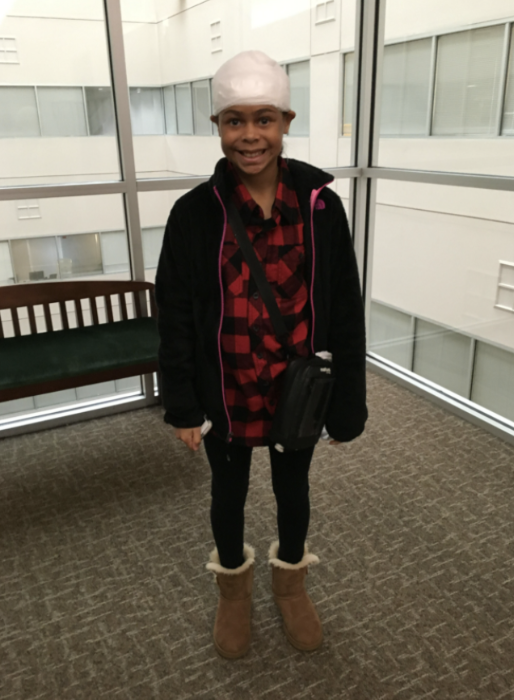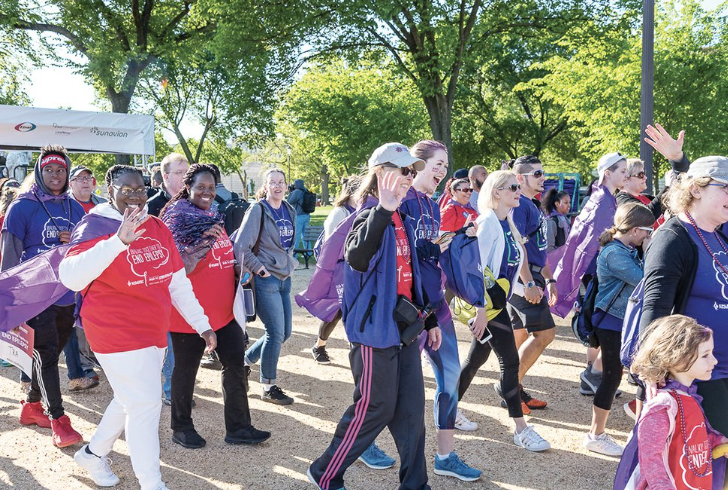Operation Epilepsy Connect
"In forming these connections, I hope more individuals will look at epilepsy how I see it—not as something that holds me back, but that has shaped who I am and has made me stronger."

Background Information
1 in 26 people will develop epilepsy in their lifetime—a chronic neurological condition in which nerve cell activity in the brain is disturbed, ultimately causing seizures. However, epilepsy is not just one condition, but a group of many different types of ‘epilepsies’ which include (but are not limited to) absence seizures, myoclonic seizures, and tonic-clonic seizures. Despite common misconception, epilepsy is more than just having seizures, it’s the neurological effects those seizures have on individuals and the emotional effects, as well. According to the United States National Institutes of Health, epilepsy has a direct effect on people’s social inclusion as well as their perception of social inclusion. Currently, there is no cure for epilepsy, just a multitude of treatments that manage seizures and different symptoms. Because of this, anxiety occurs more often in people with epilepsy, and depression is prevalent as well. The general feeling of being alone in a struggle is all too common; too many people struggle alone and silently. Organizations, people, and foundations exist to solve the larger problems that accompany living with epilepsy. For instance, the mission of the Epilepsy Foundation is: “to lead the fight to overcome the challenges of living with epilepsy and to accelerate therapies to stop seizures, find cures, and save lives.”
While Martine felt that what the Epilepsy Foundation is doing is great, she also noted that it does not overtly tackle the lack of opportunities that exist for people with epilepsy to connect on a deeper, more personal level. By deciding to create a pen-pal program, she worked on creating a space that allows for strong interpersonal relationships between people of all ages living with epilepsy, ultimately combating loneliness and mental health struggles. As someone who has epilepsy, she has seen and experienced how integral and beneficial it can be to connect with someone who truly understands living with a hidden disability. Martine focused on that community in the New Jersey area, creating a program that helps other people, no matter their age, form those special relationships, especially during times like these when we are physically separated.
“In forming these connections, I hope more individuals will look at epilepsy how I see it—not as something that holds me back, but that has shaped who I am and has made me stronger.”
– Martine Gulliver
Implementation of Project
When Martine first started working on the project, things were going well: she was learning how to develop her own website, had assembled an action team to help implement the project, and created an instagram page for her CLP. However, senior year was a lot busier than she originally anticipated. This prompted her to make the decision to switch gears, focusing on the web development, Instagram page, and Google form that would match pen pals.
Results of Project
Ultimately, the project didn’t go as Martine initially expected, but she was able to develop an Instagram page that she will use to grow the platform (Operation: Epilepsy Connect), a Google form that will be used to match pen pals, and an almost functioning website that has a lot of good information about her CLP. I spent around 12 hours (rough estimate) this She and her action team plan on finalizing the fully functioning website, and launching the program March 26, 2022 (a day which means a lot to her and members of the epilepsy community because it’s Purple Day, which is a global day for Epilepsy Awareness). On this day, teens in her area with epilepsy will be able to connect with one another, feel less alone, and understand that there are other people out there like them with similar shared experiences.
What’s Next
With her leadership skills, Martine plans on continuing to step into new roles at her school, like being the Head Chair of Executive Committee (their disciplinary council), and working on a task force to develop initiatives to empower women at the school. As her time in high school is coming to an end soon, she’s looking to attend college–maybe take a gap year–in an environment that blends community, rigorous academics, and the outdoors.
“A personal goal of mine is to participate in the Walk to End Epilepsy this spring, walking a marathon (26 miles) in one day for the 1 in 26 people diagnosed with epilepsy in their lifetime.”
– Martine Gulliver





